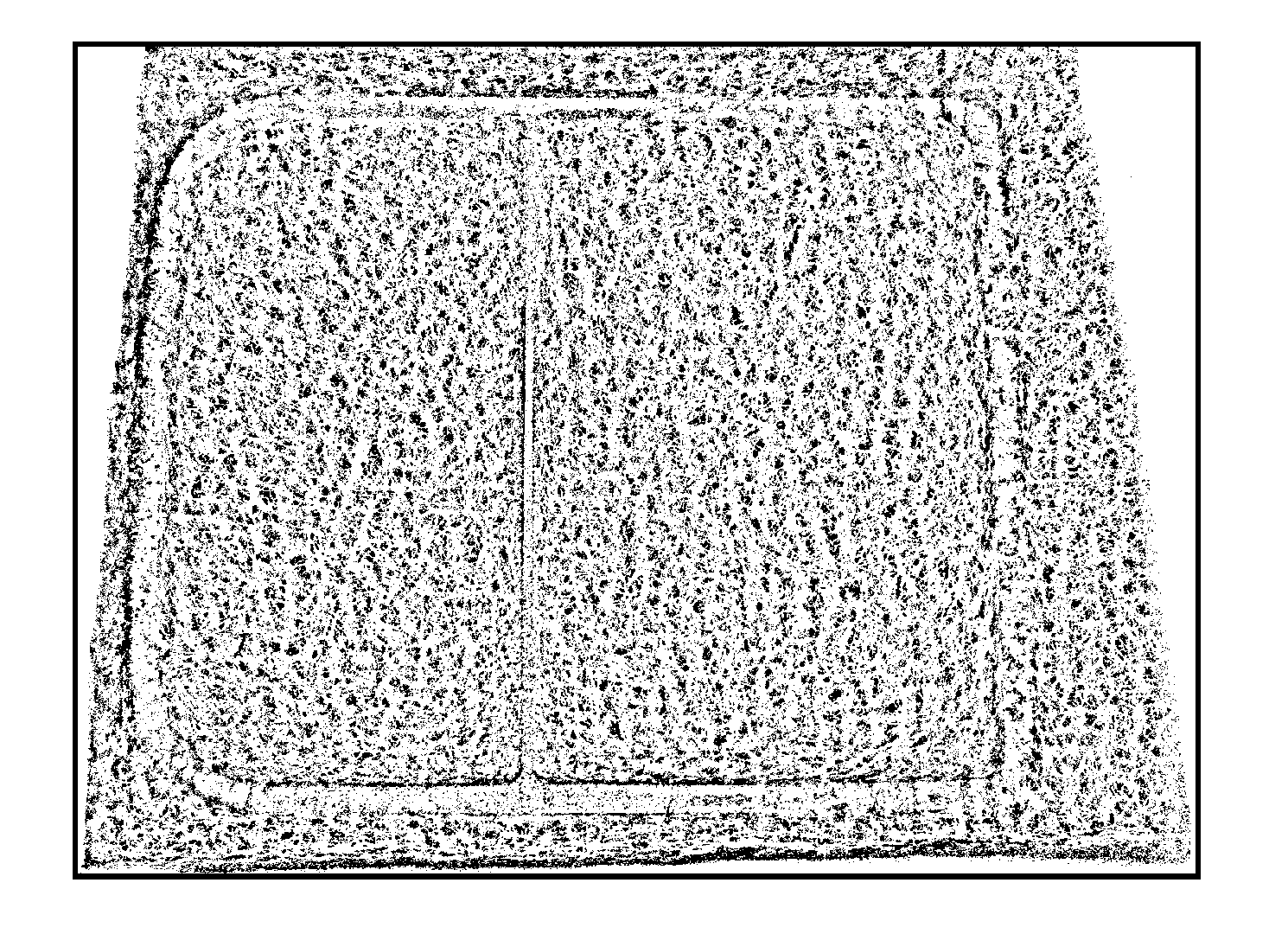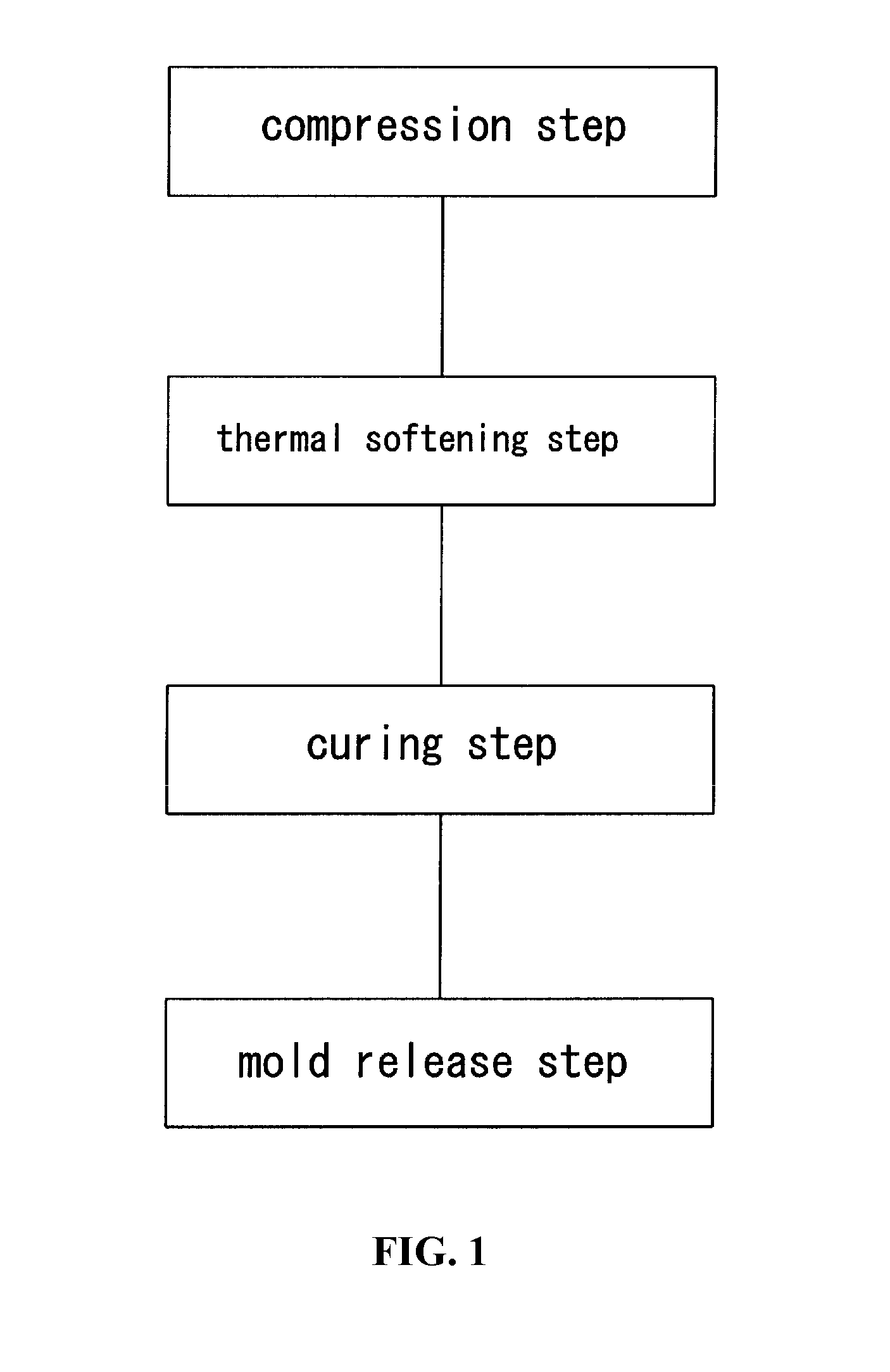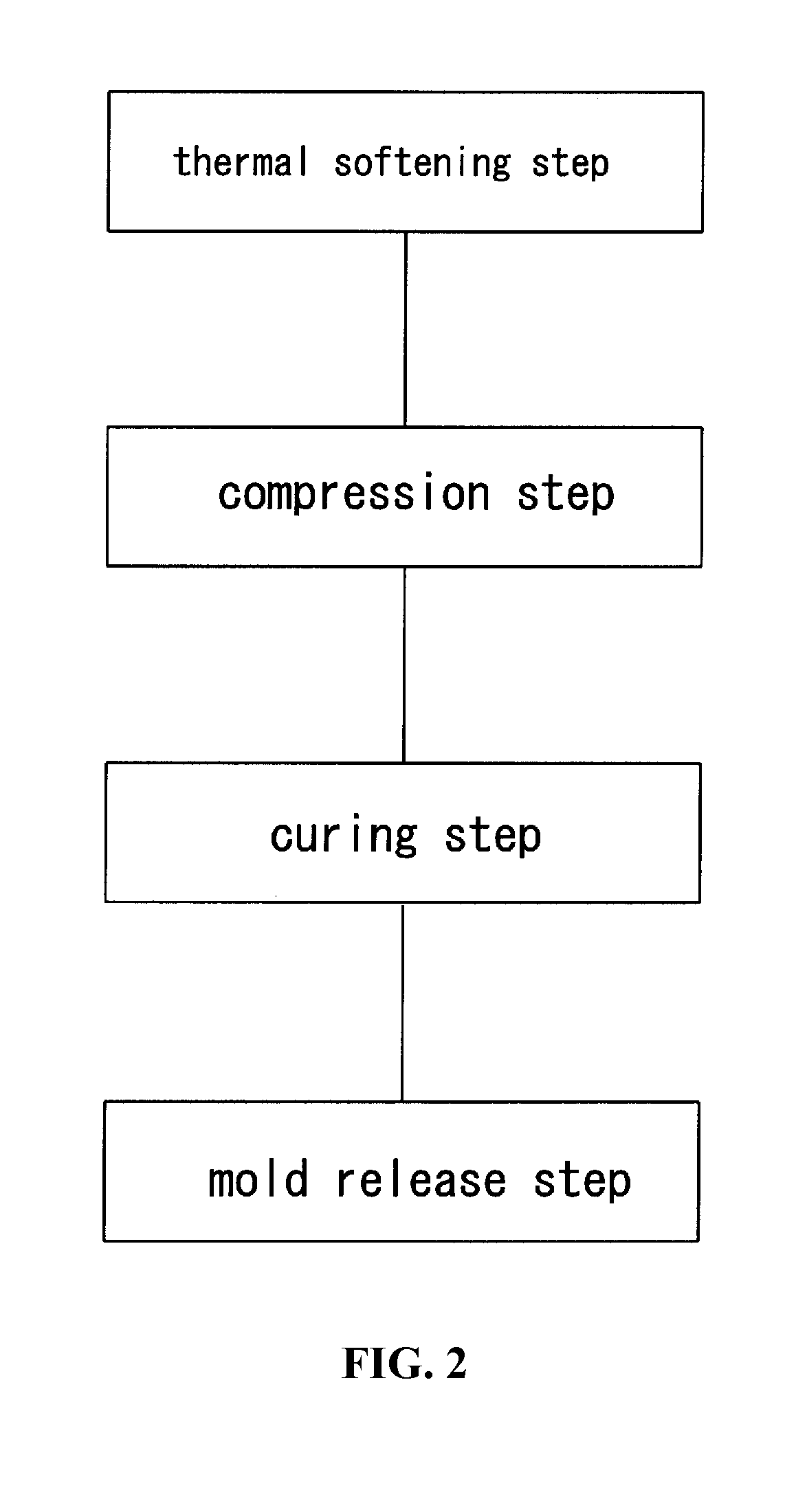Method for forming cushions
a cushion and cushion body technology, applied in the field of cushioning, can solve the problems of increasing production time, large mold, and difficulty in forming secondaries, and achieve the effects of shortening the mold release time, reducing the amount of heating, and improving production efficiency
- Summary
- Abstract
- Description
- Claims
- Application Information
AI Technical Summary
Benefits of technology
Problems solved by technology
Method used
Image
Examples
first embodiment
[0070]The method has the following steps:[0071](1) compression step of compressing the structure 2 with a mold 3;[0072](2) thermal softening step of thermally softening the structure 2 with a heating medium;[0073](3) curing step of directly and forcibly cooling down the structure 2 with a coolant to cure the texture; and[0074](4) mold release step of releasing the structure 2 from the mold 3.
[0075]In step (1), the structure 2 is compressed to be deformed with the mold 3 and kept in the compressed state for a predetermined time as shown in FIGS. 4(a) and 5(a).
[0076]The mold 3 has the shape conforming to a target form. For example, the mold 3 may have a downward curved shape, e.g., a dish shape, to form the curved convex part. This forms the partial area of the structure 2 to a curved shape (for example, R shape). The mold 3 may be provided with or without holes. In the former case, the number of holes may be selected arbitrarily according to the forming conditions, and the arrangeme...
second embodiment
[0082]The method has the following steps:[0083](1) thermal softening step of thermally softening the structure 2 with a heating medium;[0084](2) compression step of compressing the structure 2 with a mold 3;[0085](3) curing step of directly and forcibly cooling down the structure 2 with a coolant to cure the texture; and[0086](4) mold release step of releasing the structure 2 from the mold 3.
[0087]The method of the second embodiment performs the thermal softening step and the compression step in the reverse order to that of the first embodiment.
third embodiment
[0088]The method has the following steps:[0089](1) thermal softening / compression step of thermally softening the structure 2 with a heating medium, while compressing the structure 2 with a mold 3;[0090](2) curing step of directly and forcibly cooling down the structure 2 with a coolant to cure the texture; and[0091](3) mold release step of releasing the structure 2 from the mold 3.
[0092]The method of the third embodiment simultaneously performs the thermal softening step and the compression step of the first embodiment or the second embodiment.
[0093]The softening step enables the three-dimensional structure of the varying density to be formed homogeneously. This allows the seat cushion to have the hard ends and advantageously improves the durability of the seat cushion.
[0094]According to the first to the third embodiments, the mold 3 may be preferably made of a metal plate, a resin plate or a cement plate with openings, and the heating medium may be supplied preferably through the ...
PUM
| Property | Measurement | Unit |
|---|---|---|
| diameter | aaaaa | aaaaa |
| diameter | aaaaa | aaaaa |
| diameter | aaaaa | aaaaa |
Abstract
Description
Claims
Application Information
 Login to View More
Login to View More - R&D
- Intellectual Property
- Life Sciences
- Materials
- Tech Scout
- Unparalleled Data Quality
- Higher Quality Content
- 60% Fewer Hallucinations
Browse by: Latest US Patents, China's latest patents, Technical Efficacy Thesaurus, Application Domain, Technology Topic, Popular Technical Reports.
© 2025 PatSnap. All rights reserved.Legal|Privacy policy|Modern Slavery Act Transparency Statement|Sitemap|About US| Contact US: help@patsnap.com



